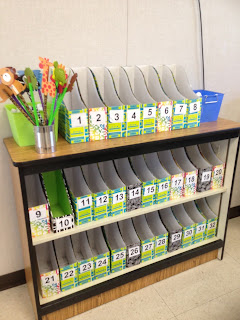In John Van de Walle's book, Teaching Student-Centered Mathematics, K-3, he devotes a whole chapter (Chapter Four) to helping children master the basic facts. He writes that Mastery of a basic fact means that a child can give a quick response (in about 3 seconds) without resorting to noneffficient means, such as counting. He doesn't talk about memorizing here, but he does talk about helping students develop efficient strategies based on relationships between quantities (such as anchoring on 5 and 10 to master facts such as 8 + 6 by thinking of 8 as 10 with 2 missing and then getting that 2 from inside the 6 and making a new fact, 10 + 4) and relationships between operations (such as thinking addition to solve subtraction).
There always seems to be some controversy between the "memorize your facts" group and the "develop your number sense" group. But these things aren't mutually exclusive. Memorizing your facts is very helpful. But, developing your number sense is helpful AND important. In the text series adopted my district, the lessons for subtraction in 2nd and 3rd grade direct students to "think addition" to solve subtraction problems. So for the problem 14 - 8 = ___ students are told, "Since you know that 8 + 6 = 14, then you already know that 14 - 8 = 6."
The only access for students is if they've already memorized 8 + 6 = 14. If they don't have recall of that fact, they have no other strategy for thinking addition to solve 14 - 6. I think this is why people confuse fact memorization as important, instead of just helpful. If it's the only strategy we develop, then it's of the utmost importance!
But think ahead now. Nobody can memorize every fact. I mean, if the child is solving the problem 54 - 28 = ____ is there anybody who thinks it would be reasonable to tell them, "Well, don't you already know that 28 + 26 = 54? " Of course they don't hold this information at a recall level.
But let's go back to the 14 - 8 = ____ problem. If we think addition that 8 + ___ = 14, but haven't memorized that 8 + 6 = 14, I can still derive this fact. I can think about needing 2 more to get to 10; then once I'm at 10, I need 4 more to get to 14. So now I've derived the missing addend as 6, but in a 2 part and a 4 part. Students (people) can do this so efficiently that it can appear memorized.
When students have ample opportunities to develop this strategy of counting up in parts, then they can also use it in the 54 - 28 = _____ problem. If we think addition as 28 + ____ = 54, we need 2 more to get to 30.... 10 and 10 gets us to 40, 50...and 4 more gets us to 54. So the parts we used to count up are 2, 10, 10, and 4, for the answer of 26.
The Common Core Standards are written so that students have both procedural and conceptual understanding. I guess I've heard people say that it's more important to teach procedures first, and worry about the conceptual understandings later. I've also heard people say that you have to develop the conceptual understanding before students can use procedures. I think everyone must have their reasons for saying so, but in the reality of the classroom, I have found that it happens much more organically than that. You can actually teach the procedures and concepts in any order or even at the same time. If you are providing a variety of opportunities for students, they tend to take what they need, and cleave to the important ideas, as it makes sense for them.
So here come the flashcards that John Van de Walle suggests. An old-school flash card has the fact written, such as 9 + 7 and students have to recall 16. But adding the 10-frame quantities to the flashcards help students develop their number sense too. I can SEE now that 9 is 10 with one missing, and I can VISUALIZE moving one dot from the 10-frame with 7 to fill in the ten-frame with 9. Now I'm using the Make a Ten Strategy.
Or now, instead of only having access to 8 + 7 if I memorize the answer as 15, I can now use the 10-frame quantities to see that if I just cover up that last dot on the 10-frame with 8, I've created a 7 + 7, and I only need to add back the covered dot to get the answer 15. Now I'm using the Use a Double (Double + 1) Strategy.
Ohhhhh the possibilities are endless :)





















